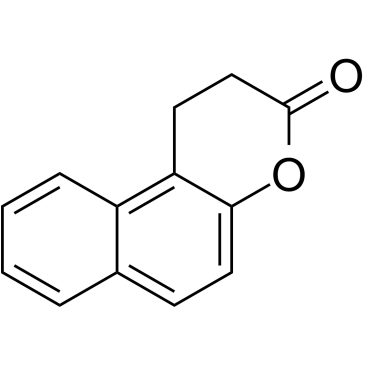The Sir2 family of protein deacetylases.
Gil Blander, Leonard Guarente
Index: Annu. Rev. Biochem. 73 , 417-35, (2004)
Full Text: HTML
Abstract
The yeast SIR protein complex has been implicated in transcription silencing and suppression of recombination. The Sir complex represses transcription at telomeres, mating-type loci, and ribosomal DNA. Unlike SIR3 and SIR4, the SIR2 gene is highly conserved in organisms ranging from archaea to humans. Interestingly, Sir2 is active as an NAD+-dependent deacetylase, which is broadly conserved from bacteria to higher eukaryotes. In this review, we discuss the role of NAD+, the unusual products of the deacetylation reaction, the Sir2 structure, and the Sir2 chemical inhibitors and activators that were recently identified. We summarize the current knowledge of the Sir2 homologs from different organisms, and finally we discuss the role of Sir2 in caloric restriction and aging.
Related Compounds
| Structure | Name/CAS No. | Molecular Formula | Articles |
|---|---|---|---|
 |
Splitomicin
CAS:5690-03-9 |
C13H10O2 |
|
SIRT1 decreases Lox-1-mediated foam cell formation in athero...
2010-09-01 [Eur. Heart J. 31 , 2301-9, (2010)] |
|
Synergistic activation of HIV-1 expression by deacetylase in...
2009-01-01 [PLoS ONE 4(6) , e6093, (2009)] |
|
Sirt1 inhibition promotes in vivo arterial thrombosis and ti...
2011-02-01 [Cardiovasc. Res. 89 , 464-72, (2011)] |
|
SIRT1 reduces endothelial activation without affecting vascu...
2010-06-01 [Aging (Albany. NY.) 2 , 353-60, (2010)] |
|
Deacetylation of the DNA-binding domain regulates p53-mediat...
2011-02-11 [J. Biol. Chem. 286 , 4264-70, (2011)] |